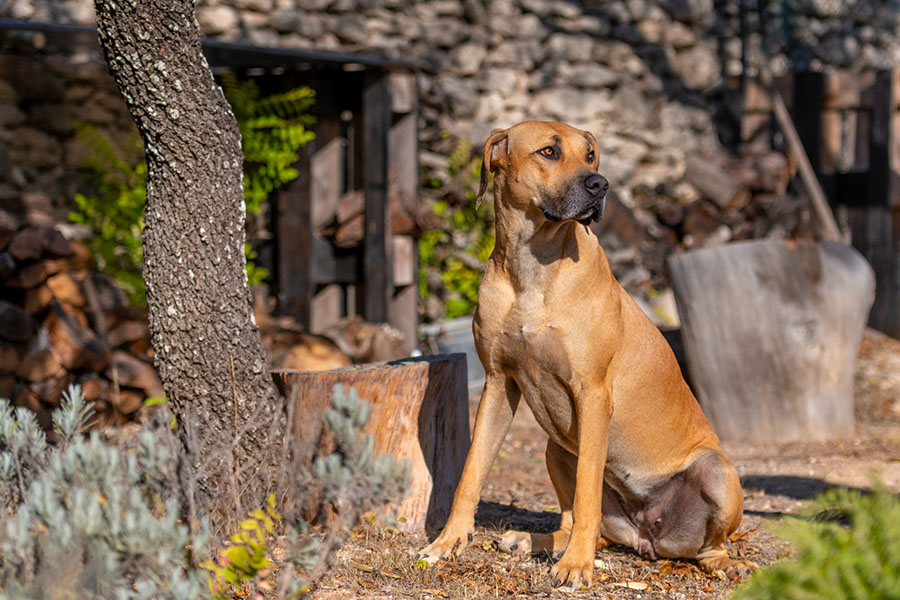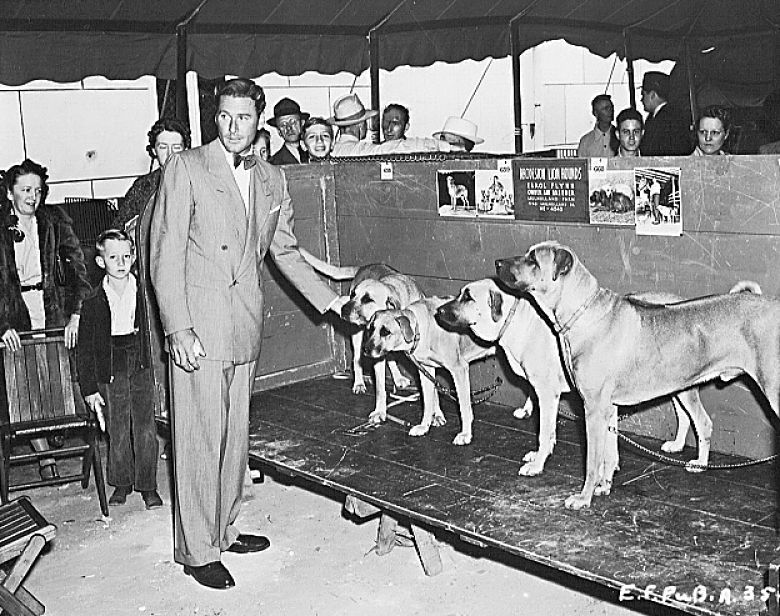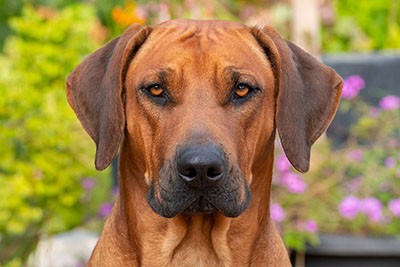The foundation stock of the Rhodesian Ridgeback was developed by the first European settlers in South Africa to fill their specific needs for a serviceable hunting dog in the wilds.

The Dutch, Germans and Huguenots who migrated to South Africa in the 16th and 17th centuries brought with them Danes, Mastiffs, Greyhounds, Salukis, Bloodhounds and other breeds. However, for more than 100 years from 1707, European immigration was closed; consequently, the importation of additional dogs of these or other breeds was not possible. Good hunting dogs, therefore, became hard to come by and their value was high. The settlers needed a dog that could flush a few partridges, pull down a wounded stag, or guard the farm from marauding animals and prowlers at night.
They also needed a dog that could withstand the rigors of the African bush, hold up under drastic changes in temperature, from the heat of the day to nights below freezing, and go a full 24 hours or more without water if need be.

They required a short-haired dog that would not be eaten alive by ticks. In addition, the settler needed a companion that would stay by him while he slept in the bush and that would be devoted to his wife and children.
Out of necessity, therefore, these settlers developed, by selective breeding between dogs which they had brought with them from home countries and the half-wild ridged dog of the Hottentot tribes, a distinct breed of the African veldt, which has come to be known as the Rhodesian Ridgeback.
The Hottentot dogs played the most important part in the development and ultimate characteristics of the new breed. Throughout all the interbreeding and crossbreeding between these native dogs and those of the settlers, the ridge of the Hottentot dog was respected and retained. In due course, the Hottentot dog established the foundation stock of our present-day Rhodesian Ridgeback.

There is no doubt the Rhodesians (now people of the country known as Zimbabwe) have developed the breed as we know it today from the original stock. In the year 1875, the intrepid missionary, Rev. Charles Helm, undertook a journey from his home in Swellendam in the Cape Province of South Africa to Rhodesia. He was accompanied by two of these dogs. While the Rev. Helm was in Rhodesia (Zimbabwe) Cornelius von Rooyen, the big-game hunter and early authority on the South African wildlife, borrowed the two dogs to take along on a hunt. Von Rooyen soon concluded that they possessed excellent instinctive hunting qualities and thereupon pioneered the breeding of a pack of the species as hunters of big game for his own use.

They have since been bred on an extensive scale in Rhodesia and were given the name of that country. Their hunting characteristics have also proved to be useful in hunting native game in other parts of the world.
Intelligent and ever alert, their heads are held high with pride and, with a set of feet that will carry them over any sort of country, they are the only breed of dog in the world that can keep a lion at bay for the hunter to kill….and live!
